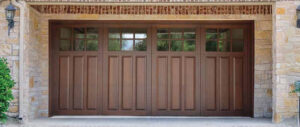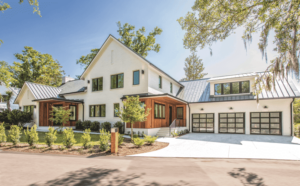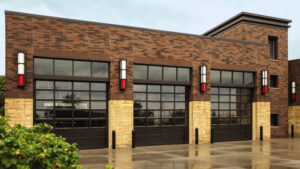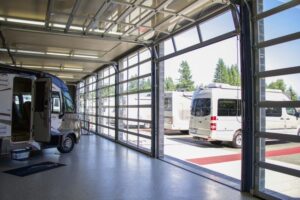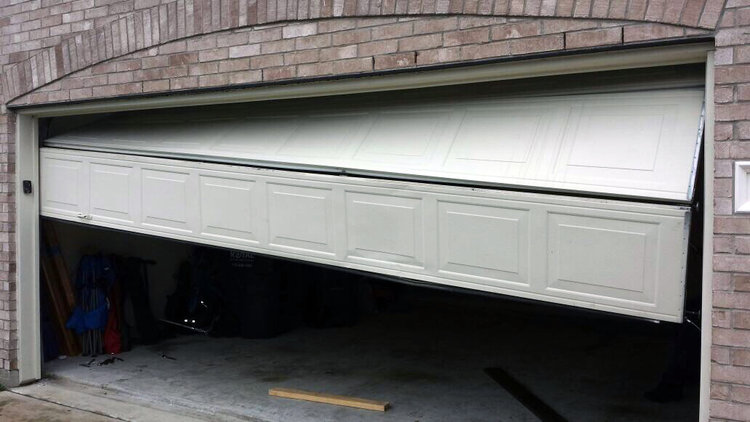Having trouble because your garage door won’t close? You’re not alone—this issue is common among many homeowners. But don’t worry; we’ve got you covered with detailed tips to get your garage door working again!
Garage door issues can be frustrating, especially when the door refuses to close properly. Understanding why this happens is the first step toward fixing it. Here are some common reasons:
- Blocked Sensors: Often, dirt, debris, or other small objects can block your safety sensors, preventing your door from closing.
- Sensor Misalignment: If the sensors are not aligned correctly, your garage door will not close.
- Dirty or Damaged Tracks and Rollers: Tracks and rollers help your door glide smoothly. Any dirt, debris, or damage can prevent the door from closing correctly.
- Incorrect Limit Settings: Your garage door has settings that determine how far it opens and closes. If set incorrectly, it might not close all the way.
- Issues with Remotes or Buttons: Sometimes, remotes or wall-mounted buttons can malfunction or become faulty, causing closing problems.
Let’s dive deeper into each issue and how to troubleshoot and resolve them.
Troubleshooting Steps for Garage Door Issues
Step 1: Inspect the Garage Door Sensors
Garage door sensors play an important role in safety. They detect objects in the door’s path to prevent injuries. When sensors malfunction, your door won’t close.
Clear Obstructions: Remove any items or debris near the sensors.
Clean Sensor Lenses: Use a soft cloth to gently clean the sensors, removing dirt and grime.
Check Sensor Alignment: Your sensors need to face each other directly. If misaligned, they typically flash a warning light. Adjust carefully until the indicator lights stay steady.
Step 2: Check Tracks and Rollers
Garage door tracks and rollers must be clean and undamaged for smooth operation.
Clean the Tracks: Regularly wipe the tracks with a clean, dry cloth. For tough grime, use a gentle cleanser.
Inspect the Tracks for Damage: Look for any dents, bends, or damage. Minor dents might be fixable by gently tapping them back into place, but severe damage requires professional assistance.
Lubricate the Rollers: Apply garage door lubricant to rollers, hinges, and other moving parts regularly to keep them working smoothly.
Step 3: Adjust Garage Door Limit Settings
Garage doors operate on limit settings, determining how far they open and close. Incorrect settings may cause your door to stop midway.
Locate the Adjustment Knobs: They’re usually found on the garage door opener unit.
Make Small Adjustments: Turn knobs slowly, making small adjustments, testing after each change.
Test and Adjust Until Correct: Continue adjusting until your garage door closes completely and stays shut.
Step 4: Test Remote Controls and Wall Buttons
Remote controls or wall buttons can fail or malfunction, causing the door to stop working properly.
Check Batteries: Replace the remote batteries regularly to maintain good signal strength.
Examine Wiring and Buttons: Inspect wall buttons and wiring for signs of wear, damage, or loose connections. If you spot problems, consider replacing these components.
Advanced Troubleshooting Tips
If basic troubleshooting doesn’t resolve the issue, here are a few advanced checks you can perform at your own risk.
Check Garage Door Springs
Garage door springs help lift and lower the door smoothly. Broken or worn-out springs will prevent your garage door from closing.
- Inspect Visually: Check springs for visible breaks or signs of wear, like rust or stretching.Perform a Balance Test: Disconnect the opener and manually lift the door halfway. If it remains balanced, your springs are fine. If it moves significantly, contact a professional.
Replace if Necessary: If springs appear damaged, avoid handling them yourself, as they’re under high tension. Professional repair is recommended for safety.
Test Garage Door Opener’s Force Settings
Incorrect force settings can prevent the door from closing fully or cause it to reverse unnecessarily.
Adjust Force Settings: Locate the force adjustment settings on the opener unit and adjust slightly. Test each adjustment carefully until the door operates normally.
When to Call a Garage Door Professional
While many garage door issues can be fixed with basic troubleshooting, some problems need professional expertise. Consider calling for help if:
- Your door consistently fails to close or stay closed.
- You hear loud, unusual noises.
- There’s visible damage to tracks, rollers, or springs.
- Basic troubleshooting hasn’t resolved your issue.
Professional garage door technicians have the tools and experience to fix complex issues safely and effectively.
How to Prevent Garage Door Issues
Avoid future garage door troubles with regular maintenance:
- Regularly Clean Sensors and Tracks: Keeping these components clean prevents most common issues.
- Lubricate Moving Parts: Regular lubrication ensures smooth operation.
Schedule Routine Maintenance Checks: Professional annual maintenance helps catch small issues before they become major problems.
Benefits of Hiring a Professional Technician
Hiring a professional for repairs has clear advantages:
- Safety: Professionals have specialized tools and training to safely handle garage door components, especially springs and tracks.
- Accuracy: Experts accurately diagnose and resolve issues, reducing the chance of future breakdowns.
Convenience: Professionals complete repairs quickly, minimizing downtime and inconvenience.
What would cause the garage door not to close?
Common causes include blocked or misaligned sensors, dirty or damaged tracks and rollers, incorrect limit settings, or issues with remotes and buttons.
How do I reset my garage door sensor?
To reset your sensors, clear any obstructions, clean the lenses, and realign them until indicator lights remain steady.
Why won't my garage door close when there's nothing in the way?
Even with nothing blocking it, issues like misaligned sensors, incorrect limit settings, or remote control problems could prevent the door from closing.
How do you fix a garage door that won't close?
Inspect and clean sensors, check tracks and rollers, adjust limit settings, and ensure remotes and wall buttons are working correctly. If issues persist, contact a professional.
Contact Us
Your safety and convenience matter to us. Whether your garage door won’t close, is stuck halfway, or just acting unpredictably, we are here to help.

